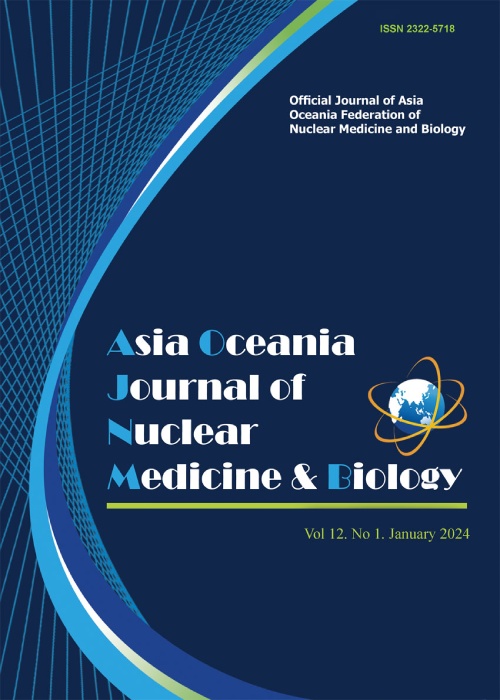Radiation-induced myocardial perfusion abnormalities in breast cancer patients following external beam radiation therapy
Author(s):
Abstract:
Objective(s)
Radiation therapy for breast cancer can induce myocardial capillary injury and increase cardiovascular morbidity and mortality. A prospective cohort was conducted to study the prevalence of myocardial perfusion abnormalities following radiation therapy of left sided breast cancer patients as compared to those with right–sided cancer.Methods
To minimize potential confounding factors, only those patients with low 10-year risk of coronary artery disease (based on Framingham risk scoring) were included. All patients were initially treated by modified radical mastectomy and then were managed by postoperative 3D Conformal Radiation Therapy (CRT) to the surgical bed with an additional 1-cm margin, delivered by 46-50 Gy (in 2 Gy daily fractions) over a 5-week course. The same dose-adjusted chemotherapy regimen (including anthracyclines, cyclophosphamide and taxol) was given to all patients. Six months after radiation therapy, all patients underwent cardiac SPECT for the evaluation of myocardial perfusion.Results
A total of 71 patients with a mean age of 45.3±7.2 years [35 patients with leftsided breast cancer (exposed) and 36 patients with right-sided cancer (controls)] were enrolled. Dose-volume histogram (DVH) [showing the percentage of the heart exposed to >50% of radiation] was significantly higher in patients with left-sided breast cancer. Visual interpretation detected perfusion abnormalities in 42.9% of cases and 16.7% of controls (P=0.02, Odds ratio=1.46). In semiquantitative segmental analysis, only apical (28.6% versus 8.3%, P=0.03) and anterolateral (17.1% versus 2.8%, P=0.049) walls showed significantly reduced myocardial perfusion in the exposed group. Summed Stress Score (SSS) of>3 was observed in twelve cases (34.3%), while in five of the controls (13.9%),(Odds ratio 1.3). There was no significant difference between the groups regarding left ventricular ejection fraction.Conclusion
The risk of radiation induced myocardial perfusion abnormality in patients treated with CRT on the left hemi thorax is not low. It is reasonable to minimize the volume of the heart being in the field of radiation employing didactic radiation planning techniques. Also it is advisable to screen these patients with MPI-SPECT, even if they are clinically asymptomatic, as early diagnosis and treatment of silent ischemia may change the outcome.Keywords:
Language:
English
Published:
Asia Oceania Journal of Nuclear Medicine & Biology, Volume:3 Issue: 1, Winter 2015
Pages:
3 to 9
magiran.com/p1348354
دانلود و مطالعه متن این مقاله با یکی از روشهای زیر امکان پذیر است:
اشتراک شخصی
با عضویت و پرداخت آنلاین حق اشتراک یکساله به مبلغ 1,390,000ريال میتوانید 70 عنوان مطلب دانلود کنید!
اشتراک سازمانی
به کتابخانه دانشگاه یا محل کار خود پیشنهاد کنید تا اشتراک سازمانی این پایگاه را برای دسترسی نامحدود همه کاربران به متن مطالب تهیه نمایند!
توجه!
- حق عضویت دریافتی صرف حمایت از نشریات عضو و نگهداری، تکمیل و توسعه مگیران میشود.
- پرداخت حق اشتراک و دانلود مقالات اجازه بازنشر آن در سایر رسانههای چاپی و دیجیتال را به کاربر نمیدهد.
In order to view content subscription is required
Personal subscription
Subscribe magiran.com for 70 € euros via PayPal and download 70 articles during a year.
Organization subscription
Please contact us to subscribe your university or library for unlimited access!



